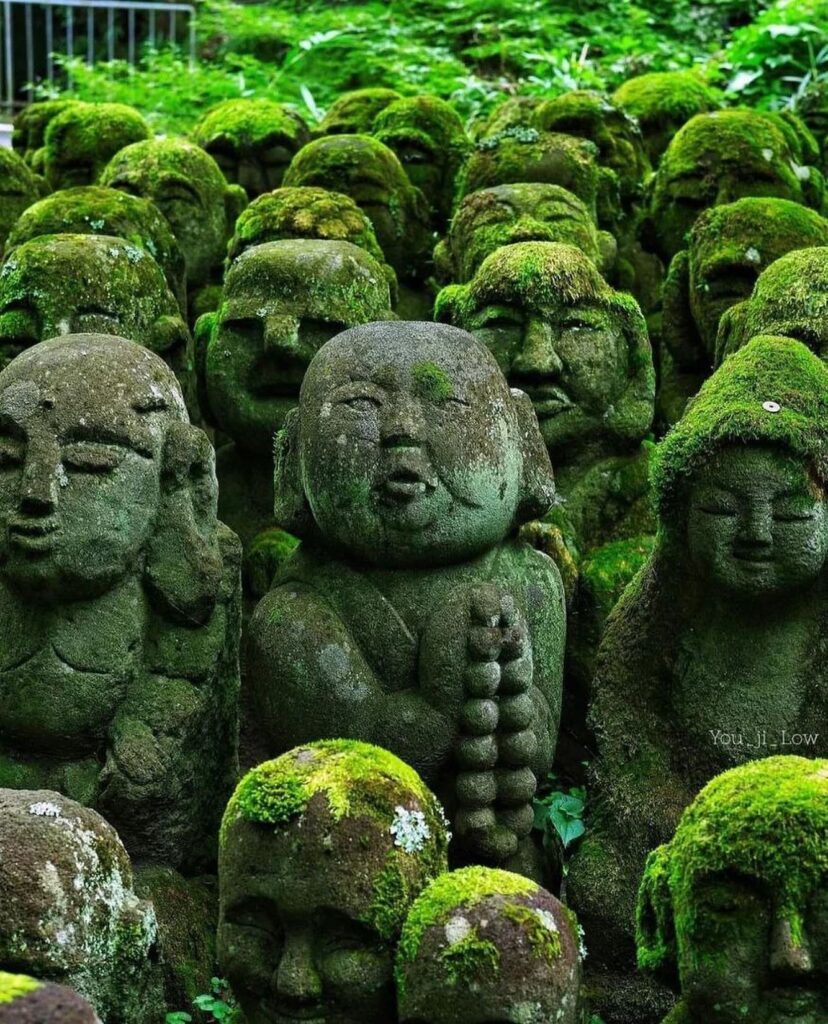Nestled in the serene hills to the far west of Arashiyama in Kyoto, Japan, lies a hidden treasure that captures the imagination of visitors with its uniqueness and eccentricity. Otagi Nenbutsu-ji, a temple renowned for its collection of 1,200 Rakan statues, stands as a testament to the rich cultural and religious tapestry that defines Kyoto. This off-the-beaten-path destination offers a fascinating journey into the mystical world of Buddhist art and spirituality, making it one of the most distinctive and bizarre temples in Kyoto.
The Enigmatic Otagi Nenbutsu-ji:
Otagi Nenbutsu-ji is not the typical temple that one might expect to find in Kyoto. While many temples in the region boast traditional architecture and serene gardens, Otagi Nenbutsu-ji sets itself apart with its whimsical and unconventional atmosphere. The temple’s history dates back to the 8th century, but it underwent reconstruction in the 1950s after suffering damage during the Meiji era.

The Rakan Statues:
What truly sets Otagi Nenbutsu-ji apart is its impressive collection of 1,200 Rakan statues, each with its own unique facial expression and pose. Rakan are enlightened disciples of Buddha who have achieved a state of perfect wisdom. These statues, carved from stone and adorned with vibrant colors, create a mesmerizing scene as they dot the temple grounds in various poses, from serene meditation to joyous celebration.
The Unusual Origins:
The story behind the creation of these statues adds an extra layer of intrigue to Otagi Nenbutsu-ji. During the temple’s reconstruction in the 1950s, worshippers and supporters were invited to carve their own Rakan statues as an offering. This communal effort resulted in a diverse and eclectic assembly of sculptures, each reflecting the individuality and creativity of its creator. As a result, the temple grounds became an open-air gallery of Buddhist art, showcasing a wide range of expressions and styles.

Exploring the Temple Grounds:
Visitors to Otagi Nenbutsu-ji are invited to wander through the temple grounds and marvel at the unique charm of each Rakan statue. The statues are not confined to traditional pedestals; they are scattered throughout the temple, creating an immersive experience for those exploring the site. As the sunlight filters through the surrounding trees, it casts an enchanting glow on the stone figures, adding to the ethereal ambiance of the temple.


Preserving History and Culture:
Otagi Nenbutsu-ji serves as more than just a quirky tourist attraction; it stands as a testament to the resilience of Japanese culture and spirituality. Despite the challenges faced over the centuries, the temple has not only survived but has also reinvented itself as a living testament to the enduring spirit of Kyoto. The Rakan statues, with their diverse expressions and postures, symbolize the multiplicity of paths one can take on the journey to enlightenment.


Conclusion:
Otagi Nenbutsu-ji, with its 1,200 Rakan statues and unconventional charm, beckons travelers seeking a truly unique and immersive experience in Kyoto. This hidden gem, nestled in the hills of Arashiyama, offers a captivating blend of history, art, and spirituality. As visitors explore the temple grounds, they are transported into a world where tradition and eccentricity coexist, leaving an indelible mark on their memories of Kyoto, Japan.





